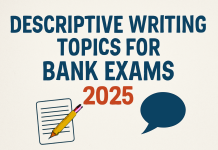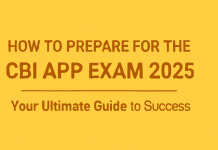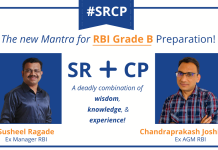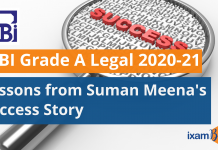Congratulations on clearing the PFRDA written exam—an achievement many aspirants spend months chasing! Now the spotlight turns to the interview, where you transform from a test‑taker into a potential regulator shaping India’s pension landscape. This comprehensive guide will expand your horizons beyond mere syllabus coverage, giving you the depth, breadth, and confidence to impress the panel.

1. Get Under the Skin of PFRDA’s Mission
Before any technical prep, invest time in understanding why PFRDA matters. India’s workforce is ageing, life expectancies are rising, and traditional family‑based old‑age care is evolving. PFRDA was established in 2013 to:
- Regulate the National Pension System (NPS) and Atal Pension Yojana (APY), ensuring transparent operations and robust fund management.
- Develop the pension sector by introducing new products, encouraging private players and simplifying subscriber onboarding.
- Educate citizens on retirement planning, tax benefits under Section 80CCD and the importance of long‑term savings.
Action Step: Read PFRDA’s latest annual report cover to cover. Note subscriber growth (now over 8 crore), cumulative Assets Under Management (AUM), recent digital initiatives like e‑NPS, and major policy milestones (e.g., auto‑choice lifecycle funds). Referencing these in your opening answer shows genuine engagement.
2. Master the Technical Fundamentals
The panel will expect a solid command of both pension mechanics and financial markets. Break your study into these pillars:
A. Pension Architecture & Product Design
- Defined Contribution vs Defined Benefit: Explain why India transitioned from the old defined‑benefit model to a contribution‑based system for sustainability.
- NPS Structure: Understand subscriber categories (Tier I vs Tier II), contribution rules, withdrawal norms and annuity purchase obligations.
- Atal Pension Yojana: Know eligibility, guaranteed pension slabs (₹1,000–₹5,000), and the cost‑sharing pattern between government and subscriber.
B. Investment & Risk Management
- Asset Allocation Guidelines: Memorise the equity cap (50 %), government securities minimum (15 %) and alternative asset limits.
- Portfolio Rebalancing: Describe how lifecycle (auto‑choice) funds adjust equity exposure based on subscriber age.
- Interest‑Rate and Credit Risk: Articulate how bond‑market volatility, yield‑curve shifts and credit downgrades affect NPS returns and what risk‑mitigation tools PFRDA mandates.
C. Regulatory Ecosystem
- Comparative Mandates: Contrast PFRDA’s role with SEBI (securities markets) and IRDAI (insurance).
- Compliance Framework: Explain periodic disclosures, internal audit requirements, and the penalty regime for non‑compliance.
Action Step: Create mind‑maps or flashcards summarising each area. Use mock interviews to verbalise these concepts in your own words.
3. Drill into Current Affairs & Policy Trends
Regulators must stay ahead of economic shifts. Frame three to five “talking points” on recent developments:
- RBI Monetary Policy Impact: Discuss how repo‑rate changes feed into government‑bond yields and subscriber expectations.
- Budget Announcements: Explain tax incentives under Section 80CCD(1B) for additional NPS contributions and any tweaks to withdrawal or exit rules.
- Technological Innovations: Highlight PFRDA’s push for digital KYC, Aadhaar‑based e‑NPS registration and mobile‑app subscriber servicing.
- Global Trends: Briefly mention leading practices in UK’s auto‑enrolment or Australia’s Superannuation model to show comparative perspective.
Action Step: Subscribe to a daily financial news roundup (like The Economic Times or Mint). Each morning, pick one pension‑linked story to discuss.
4. Perfect Your Behavioural Storytelling
Technical prowess alone won’t seal the deal. PFRDA’s panel will probe your values, teamwork and leadership potential. Prepare 3–4 crisp STAR stories (Situation, Task, Action, Result) around:
- Ethical Dilemmas: Perhaps you flagged a compliance gap in a prior internship or job.
- Team Coordination: Leading a cross‑functional project under tight deadlines.
- Problem‑Solving: Improving a process or resolving a client‑service issue.
Keep each narrative under 90 seconds, focus on your personal contribution and quantify outcomes (e.g., “reduced process time by 20 %”).
5. Exhibit Alignment with PFRDA’s Culture
Regulators operate in the public interest. In your answers and body language, project:
- Integrity: Emphasise your commitment to transparency and ethical conduct.
- Citizen‑Centric Mindset: Talk about how even small enhancements (faster grievance resolution, clearer communications) can improve millions of lives.
- Continuous Learning: Mention any recent certifications—CFA Level I, certification in pension accounting or a short course on fintech in retirement planning.
Sample Pitch:
“For me, joining PFRDA is not just a career move—it’s an opportunity to build financial security for India’s future retirees. I believe my training in financial analysis and passion for policy will help bridge the gap between complex regulations and subscriber trust.”
6. Hone Your Communication & Presentation
- Dress Smartly: Opt for formal Indian attire—salwar‑kameez or sari for women, dark trousers and shirt for men. Clean shoes and minimal accessories.
- Body Language: Maintain natural eye contact, sit upright and avoid crossing arms.
- Pace & Clarity: Speak at a moderate tempo, pause before emphasising key points, and avoid excessive jargon.
- Handling Unknowns: If stumped by a question, respond with “That’s an interesting point; my understanding is…,” then offer a structured guess or relate it to your broader knowledge.
7. Prepare Intelligent Questions for the Panel
End on a strong note by asking 1–2 strategic questions:
- Regulatory Technology: “How does PFRDA envision AI and data analytics shaping compliance monitoring for pension fund managers?”
- Financial Inclusion: “Are there plans to enhance NPS penetration among the unorganised sector through mobile financial services or village‑level entrepreneurs?”
These demonstrate foresight and genuine curiosity.
8. Final Touches & Day‑Of Checklist
- Mock Interview Marathon: Schedule 3–4 practice sessions with peers or mentors. Record and self‑review.
- Document Kit: Carry multiple printouts of your application, interview call letter, ID proof and original educational certificates.
- Rest & Nutrition: Get a good night’s sleep, have a balanced breakfast and avoid caffeine overload.
Wrapping Up
Cracking the PFRDA interview is a journey from mastering pension‑sector intricacies to showcasing your personal fit with a regulator’s ethos. By layering technical depth, policy savvy, behavioural insights and polished communication, you’ll present yourself not just as an applicant, but as a committed architect of India’s retirement security.
Remember, the panel seeks individuals who will stay curious, act ethically and keep millions of subscribers’ interests at heart. Start your holistic preparation today, and walk into that interview room ready to shape India’s pension future. Good luck!
ixamBee specializes in providing expert guidance and resources for banking exams 2025, ensuring that you are well-prepared for the Upcoming Bank Exams like RBI Grade B, NABARD Grade B, IBPS SO, and more. Our courses align with the bank exam calendar 2025, covering all the essential topics. With a focus on the upcoming bank jobs, our Previous Year Papers, BeePedia, SSC CGL, SSC CHSL, SSC MTS and other Mock Tests are designed to help you excel in upcoming banking exams.















